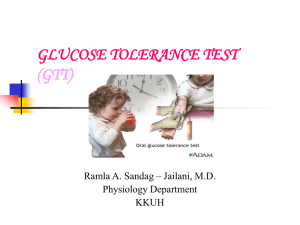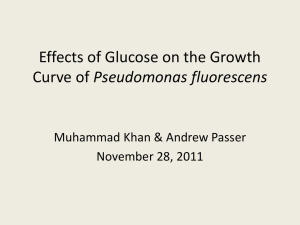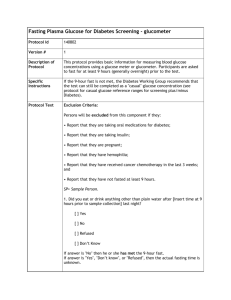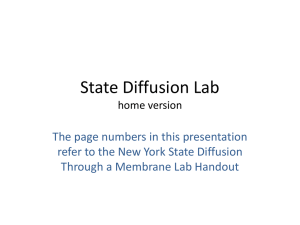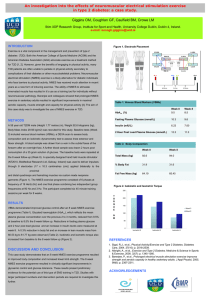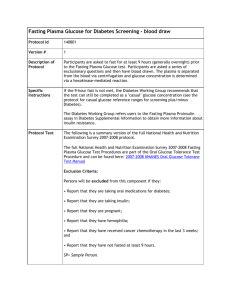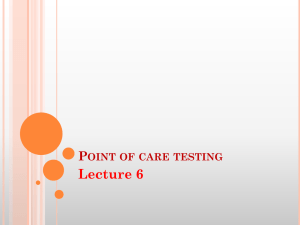Document
advertisement
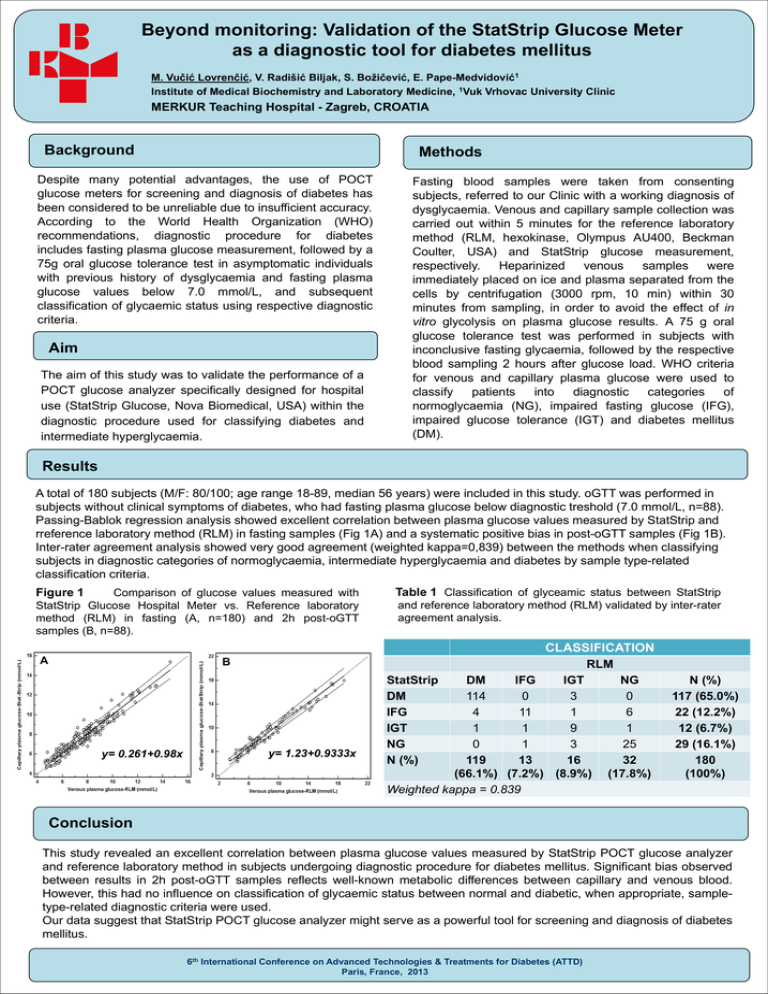
Beyond monitoring: Validation of the StatStrip Glucose Meter as a diagnostic tool for diabetes mellitus M. Vučić Lovrenčić, V. Radišić Biljak, S. Božičević, E. Pape-Medvidović1 Institute of Medical Biochemistry and Laboratory Medicine, 1Vuk Vrhovac University Clinic MERKUR Teaching Hospital - Zagreb, CROATIA Abstract (lick on the text to edit) Background Methods Despite many potential advantages, the use of POCT glucose meters for screening and diagnosis of diabetes has been considered to be unreliable due to insufficient accuracy. According to the World Health Organization (WHO) recommendations, diagnostic procedure for diabetes includes fasting plasma glucose measurement, followed by a 75g oral glucose tolerance test in asymptomatic individuals with previous history of dysglycaemia and fasting plasma glucose values below 7.0 mmol/L, and subsequent classification of glycaemic status using respective diagnostic criteria. Aim The aim of this study was to validate the performance of a POCT glucose analyzer specifically designed for hospital use (StatStrip Glucose, Nova Biomedical, USA) within the diagnostic procedure used for classifying diabetes and intermediate hyperglycaemia. Fasting blood samples were taken from consenting subjects, referred to our Clinic with a working diagnosis of dysglycaemia. Venous and capillary sample collection was carried out within 5 minutes for the reference laboratory method (RLM, hexokinase, Olympus AU400, Beckman Coulter, USA) and StatStrip glucose measurement, respectively. Heparinized venous samples were immediately placed on ice and plasma separated from the cells by centrifugation (3000 rpm, 10 min) within 30 minutes from sampling, in order to avoid the effect of in vitro glycolysis on plasma glucose results. A 75 g oral glucose tolerance test was performed in subjects with inconclusive fasting glycaemia, followed by the respective blood sampling 2 hours after glucose load. WHO criteria for venous and capillary plasma glucose were used to classify patients into diagnostic categories of normoglycaemia (NG), impaired fasting glucose (IFG), impaired glucose tolerance (IGT) and diabetes mellitus (DM). Results Abstract (lick on the text to edit) A total of 180 subjects (M/F: 80/100; age range 18-89, median 56 years) were included in this study. oGTT was performed in subjects without clinical symptoms of diabetes, who had fasting plasma glucose below diagnostic treshold (7.0 mmol/L, n=88). Passing-Bablok regression analysis showed excellent correlation between plasma glucose values measured by StatStrip and rreference laboratory method (RLM) in fasting samples (Fig 1A) and a systematic positive bias in post-oGTT samples (Fig 1B). Inter-rater agreement analysis showed very good agreement (weighted kappa=0,839) between the methods when classifying subjects in diagnostic categories of normoglycaemia, intermediate hyperglycaemia and diabetes by sample type-related classification criteria. Figure 1 Comparison of glucose values measured with StatStrip Glucose Hospital Meter vs. Reference laboratory method (RLM) in fasting (A, n=180) and 2h post-oGTT samples (B, n=88). Table 1 Classification of glyceamic status between StatStrip and reference laboratory method (RLM) validated by inter-rater agreement analysis. CLASSIFICATION A B y= 0.261+0.98x RLM y= 1.23+0.9333x StatStrip DM IFG IGT NG N (%) DM IFG IGT 114 0 3 4 11 1 1 1 9 0 1 3 119 13 16 (66.1%) (7.2%) (8.9%) Weighted kappa = 0.839 NG 0 6 1 25 32 (17.8%) N (%) 117 (65.0%) 22 (12.2%) 12 (6.7%) 29 (16.1%) 180 (100%) Conclusion This study revealed an excellent correlation between plasma glucose values measured by StatStrip POCT glucose analyzer and reference laboratory method in subjects undergoing diagnostic procedure for diabetes mellitus. Significant bias observed between results in 2h post-oGTT samples reflects well-known metabolic differences between capillary and venous blood. However, this had no influence on classification of glycaemic status between normal and diabetic, when appropriate, sampletype-related diagnostic criteria were used. Our data suggest that StatStrip POCT glucose analyzer might serve as a powerful tool for screening and diagnosis of diabetes mellitus. 6th International Conference on Advanced Technologies & Treatments for Diabetes (ATTD) Paris, France, 2013


